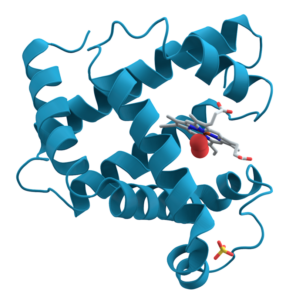Proteins are polymeric chains made of monomeric units called amino acids.
Amino acids are organically available compounds made of Carbon, Oxygen, Hydrogen and Nitrogen mainly and have some other elements like Sulphur in their side chains. They are called amino acids precisely due to the presence of amino group(−NH3+) and carboxylate group (−CO2–).
The human body requires a total off twenty amino acids to function properly. Among these 20 amino acids, there are nine such amino acids that the human body cannot synthesize. They are called essential (monomer of protein examples) amino acids, namely-Methionine, Threonine, Histidine, Valine, Phenylalanine, Isoleucine, Tryptophan, Lysine and Leucine. Since they cannot be synthesized it is very important to obtain them optimally through our diet.
Here are some monomer of protein example:
Essential amino acids:
Non-essential amino acids:
Essential Amino Acids:
Phenylalanine:
Abbreviated as (Phe) is the preceding component of various neurotransmitters like- Tyrosine, Dopamine, Epinephrine and Norepinephrine. One of three amino acids with an aromatic ring in its side chain is phenylalanine. Human RBC, precisely haemoglobin is one of the highest sources of Phe.

Valine:
Valine or Val is an aliphatic side-chained amino acid. It is one of the three that has a chain branching to one side of the molecule. Valine functions in muscle regeneration and muscle growth.
Threonine:
Threonine is one of just two amino acids with a polar neutral side chain, meaning it does not ionize under normal circumstances. Unlike humans, microorganisms can synthesize Threonine from Aspartic Acid.
Tryptophan:
Nutritionally essential Tryptophan (Trp) is the second of the three amino acids that have an aromatic side chain. A major component of various substances like- neurotransmitter Serotonin and Vitamin Niacin(Vit B3). Milk is considered an important dietary source of Tryptophan.

Image: Wikipedia
Methionine:
An essential amino acid Methionine (Met) is one of the two that have a Sulphur in its side chain. This means that Methionine can ionize even at normal pH. It can be obtained from eggs as egg albumins contain a 5% by weight of Methionine.
Leucine:
Leucine is an essential amino acid also abbreviated as Leu is a major component of human Haemoglobin (15% by weight). Like Valine, Leucine also has a branched aliphatic side chain. Obtained from plants and microorganisms that can synthesize Leucine from Pyruvic acid.
Non-essential Amino Acids:
Alanine:
A non-essential amino acid- which means that humans can synthesize alanine(Ala). It occurs naturally in human muscle in 2 peptides- carnosine and anserine. It is also the constituent of Vitamin Pantothenic acid or Vitamin B5. It is a simple amino acid with a non-branched aliphatic side chain.

Image: Wikipedia
Aspargine:
A non-essential amino acid (Asn) is closely related to Aspartic Acid, which most warm-blooded animals can easily synthesize from aspartic acid itself. It has an amide side-chain, making it one of only two amino acids with one.
Serine:
Serine is the second amino acid with a polar neutral side chain, after glycine. Ser, on the other hand, is not an essential amino acid-like threonine. Most common proteins can be hydrolysed to obtain Serine. Humans can even synthesize simply from glucose, so it doesn’t even require dietary sources.

Image: Wikipedia
Aspartate:
Aspartate or Asp is a non-essential amino acid easily obtained from the hydrolysis of normally found proteins. One of the 2 amino acids that have a cationic side chain which means that they are anions in side chains. Hence they can act as Bronsted bases in normal pH.
Glutamate:
Glutamic acid exists in its ionic form as Glutamate. Also has a cationic side chain and exists as Glutamate (Glu) at normal pH. The most abundant neurotransmitter in the vertebrate and human nervous systems. Glutamate is also a precursor of GABA (gamma-Aminobutyric acid).

Image: Wikipedia
Proteins:
Proteins are large biomolecules that are the main building blocks of tissues, muscles and organs. Made up of thousands of amino acids monomers, they vary in shape and structure based on the structure and nature of their monomers.

Image: Wikipedia
The reason is that based on the nature of their side chains amino acids can be hydrophilic(water-loving), hydrophobic(water-hating), cationic, anionic or neutral. This also changes the nature of the protein they compose, based on which type of amino acids nature plays dominant in greater number.
Proteins are very versatile and have several uses and functions. Antibodies, enzymes and hormones are nothing but proteins that function differently.
Essential and Non-essential amino acids:
As mentioned above a total of 20 amino acids are required for the human system to function perfectly. But they are again classified into 2 types.
Some amino acids are synthesized by the human body itself, so we do not need to go about obtaining them from dietary sources or supplements. These amino acids are called non-essential amino acids. Among the 20 eleven of the amino acids are non-essential.
The rest of the nine amino acids cannot be synthesized by humans (but can be synthesized by plants and microorganisms). So we must obtain them from dietary sources- like plants, meat and milk or supplements to make up for this inability. These amino acids often produce certain vitamins, so their deficiency can lead to the deficiency of the vitamin itself.
CONCLUSION:
Proteins are one of the major biomolecules that make up the human body and amino acids are the smaller blocks that join up to form these proteins. Unlike carbohydrates, proteins cannot be made up of the same type of monomer. Since the amino acids differ from each other in nature based on their stricture and side-chain composition, they inherently modify the structure, shape and nature of the proteins they form as well. So proteins are usually not present in specific shapes and structures.
This ability to change themselves in various pH or media allow them to function as enzymes, vitamins or neurotransmitters. On the other hand, their flexible chains allow them to produce muscles that can relax and contract. So we can say that this versatility of proteins comes from their amino acid monomers themselves.
Also Read:
- Do white blood cells have a nucleus
- Does fermentation occur in the mitochondria
- Function of vacuole in animal cell
- Is maltase an enzyme
- Trilobite examples
- Plant enzyme example
- Do proteins have phosphorus and sulfur
- Obligate aerobe
- Saturated fat
- Heterotrophs examples

I am Trisha Dey, a postgraduate in Bioinformatics. I pursued my graduate degree in Biochemistry. I love reading .I also have a passion for learning new languages.
Let’s connect through linked in: